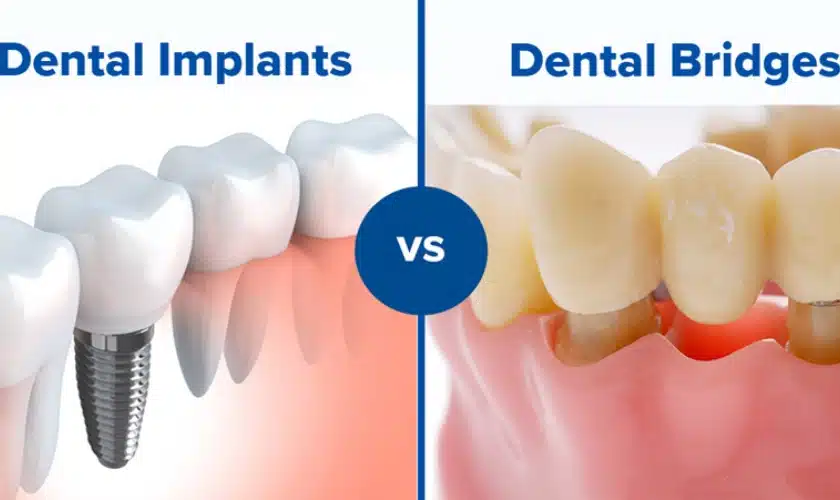All About Dental Sense
All About Dental Sense
Blog Article
The Greatest Guide To Dental Sense
Table of ContentsDental Sense Can Be Fun For EveryoneDental Sense Can Be Fun For AnyoneThe Main Principles Of Dental Sense Dental Sense Things To Know Before You Buy
are clinical devices surgically implanted into the jaw to recover a person's ability to eat or their look. They provide assistance for artificial (phony) teeth, such as crowns, bridges, or dentures. When a tooth is shed because of injury or condition, an individual can experience problems such as fast bone loss, faulty speech, or changes to chewing patterns that lead to discomfort.Oral implant systems are composed of a dental implant body and oral implant abutment and might additionally consist of a joint addiction screw. Dental implants. The dental implant body is surgically put in the jawbone in place of the tooth's origin. The oral implant joint is usually affixed to the implant body by the joint fixation screw and expands via gum tissues into the mouth to support the attached fabricated teeth
(https://dentalsense1.mystrikingly.com/blog/transform-your-smile-with-dental-implants-root-canal-procedures-and)Framework of The Dental Implant System selecting dental implants, speak to your oral copyright about the potential benefits and risks, and whether you are a candidate for the treatment. Points to take into consideration: Your total health is an important consider identifying whether you are a great candidate for oral implants, how much time it will certainly take to heal, and how much time the dental implant might remain in place.
Smoking may affect the healing procedure and reduce the long-term success of the implant. The recovery process for the implant body may take numerous months or longer, during which time you typically have a short-lived abutment instead of the tooth. the oral implant procedure: Carefully adhere to the dental hygiene guidelines provided to you by your dental service provider.
Dental Sense Things To Know Before You Buy
Implant failure can cause the requirement for another medical treatment to repair or replace the dental implant system. Brings back the capability to chew Recovers cosmetic look Helps maintain the jawbone from diminishing due to bone loss Maintains the wellness of the surrounding bone and periodontals Assists keep nearby (nearby) teeth stable Improves lifestyle Damage to bordering natural teeth during implant placement Injury to the surrounding cells throughout surgical procedure, such as sinus perforation Injury throughout surgery (for instance, crack of bordering jawbone) Insufficient feature, such as really feeling like the teeth do not bite together normally An experience that the tooth hangs or turning in place arising from a joint screw loosening Implant body failure (looseness of the dental implant body) because of systemic infection, which might be more likely in patients with uncontrolled diabetes due to neighborhood infection in bone and gums sustaining the implant body because of delayed recovery, which might be more probable in individuals who smoke Difficulty cleaning the gums around the implant, causing poor oral hygiene Without treatment gum disease Post-surgical pins and needles as a result of nerve impingement or damage Constantly notify health and wellness care carriers and imaging specialists that you have dental implants before any magnetic resonance imaging (MRI) or x-ray treatments.
FDA is not mindful of any type of adverse occasions reported for MRI or x-ray procedures with dental implants. Dental implants systems are commonly made of materials that comply with browse this site worldwide consensus requirements of the International Organization for Standardization (ISO) or ASTM International. These criteria have details of what makes a risk-free product.

An oral implant is a framework that replaces a missing tooth. With screw-like devices, the surgeon inserts an implant into the jawbone, and it acts as an anchor for a man-made tooth, called a crown.
Getting The Dental Sense To Work
Some people are not eligible for oral implant surgery. It is for oral specialists to operate on individuals with: severe illnessuncontrollable metabolic diseasebone or soft tissue condition or infectionIf these issues are resolved, an individual can have the surgical treatment. In, oral cosmetic surgeons avoid operating individuals with: If people with any of the above undertake oral implant surgical procedure, there is a higher danger of the implant failing.

Oral implant surgery is a customized process. It's not the exact same for every person. But the following offers a general overview of what you can anticipate your dentist, dental cosmetic surgeon, periodontist or prosthodontist to do: Position the dental implant operatively. Give you time to recover. Attach the blog post and last crown, bridge or denture.
Next, your doctor will thoroughly position the oral implant into your jaw. If your implant is near the front of your mouth, your dental expert will certainly make a short-term tooth for you to put on till you heal.
Get This Report on Dental Sense
Your copyright can inform you what to expect in your situation. Throughout the healing phase, your jawbone needs to fuse to the oral implant. This process, called osseointegration, is vital for security and long-term success. This process can take anywhere from 3 to 9 months. In many cases, it might take much longer.
Once your dental implant heals, your dental expert can attach the abutment (tiny adapter post) and your final restoration (crown, bridge or denture). This typically takes regarding one hour to finish and may need a 2nd minor surgical treatment. You should not really feel any kind of discomfort throughout your oral implant treatment due to the fact that your service provider will certainly use drug to numb your gums.
Report this page